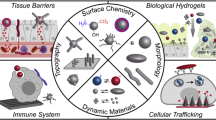Abstract
Purpose
Hybrid liposomes composed of vesicular and micellar molecules have been used as drug-delivery systems. It has become clear that hybrid liposomes alone have an inhibitory effect against the growth of various tumor cells. The present study was designed to determine whether a drug-free hybrid liposome composed of dimyristoylphosphatidylcholine (DMPC) and polyoxyethylenealkyl ether (EO) [90 mol% DMPC/10% C12(EO)21 (HL21), 90 mol% DMPC/10% C12(EO)23 (HL23), or 90 mol% DMPC/10% C12(EO)25 (HL25)], inhibit the liver metastasis of human neuroblastoma cells and thus increases survival.
Methods
A human neuroblastoma cell, TNB9, and BALB/C-nu/nu athymic mice were used in this study. First, we determined the inhibitory effect of the hybrid liposomes on TNB9 cells in vitro. Next, to determine the inhibitory effect of the hybrid liposomes on metastasis of neuroblastoma cells to the liver, we made a murine hepatic metastasis model by implanting TNB9 cells (2 × 106) in the spleen of the mice and compared anatomic appearance, weights, and histological findings of the livers of treated mice and control mice 60 days after the beginning of a 7-day intraperitoneal injection of a hybrid liposome. We also compared survival rates using the Kaplan–Meier method.
Results
In mice implanted with TNB9 neuroblastoma cells and treated with HL21 or HL25, no histological evidence of metastasis was found, the weight of the liver was normal, and survival was a mean of 88 and 87.9 days, respectively. In contrast, mice treated with HL23 and control mice had countless tumor cell masses histologically, their liver weight was increased, and their survival was 73.0 and 68.6 days, respectively.
Conclusions
Two kinds of hybrid liposomes, HL21 and HL25, inhibit metastasis of human neuroblastoma cells to the liver, and thus increase survival.






Similar content being viewed by others
References
http://seer.cancer.gov/publications/childhood/sympathetic.pdf. Accessed Feb 1 2011
Bangham AD, Sandich MN, Watkins JC (1965) Diffusion on univalent ions across the lamellae of swollen phospholipids. J Mol Biol 13:238–252
Wreschner DH, Gregoriadis G (1978) Formation of hybrid liposomes from negatively and positively charged liposomes: a possible model for the study of membrane fusion. Biochem Soc Trans 6:922–925
Allen TM, Everrest JM (1983) Effect of liposome size and drug release properties on pharmacokinetics of encapsulated drug in rat. J Pharmacol Exp Ther 226:539–544
Rahman A, More N, Schein PS (1982) Doxorubicin-induced chronic cardiotoxicity and its protection by liposomal administration. Cancer Res 42:1817–1825
Ueoka R, Matsumoto Y, Moss RA et al (1988) Membrane matrix for the hydrolysis of amino acid esters with marked enantioselectivity. J Am Chem Soc 110:1588–1595
Imamura C, Kemura Y, Matsumoto Y et al (1997) Remarkable inhibitory effects of hybrid liposomes on the growth of HL-60 cells coupled to induction of apoptosis. Biol Pharm Bull 20:1119–1121
Kanno A, Tsuzaki K, Miyagi M et al (1999) Chemotherapy with hybrid liposomes for melanomatosis. Biol Pharm Bull 22:1013–1014
Nakano K, Iwamoto Y, Takata W et al (2002) Specific accumulation and growth inhibitory effects of hybrid liposomes to hepatoma cells in vitro. Bioorg Med Chem Lett 12:3251–3254
Matsumoto Y, Kato T, Iseki S et al (1999) Specific inhibitory effects of hybrid liposomes on the growth of various tumor cells. Yakugaku Zasshi 119:280–287
Matsumoto Y, Yamada E, Hirano J et al (1993) Specific inhibitory effect of hybrid liposomes on growth of human lymphoma-human lymphocyte B hybridoma cells in vitro. Biol Pharm Bull 16:213–215
Ueoka R, Matsumoto Y, Hirose S et al (2002) Remarkably enhanced inhibitory effects of three-component hybrid liposomes including sugar surfactants on the growth of lung carcinoma cells. Chem Pharm Bull 50:563–565
Matsumoto Y, Kato T, Suzuki H et al (2000) Highly specific inhibitory effect of three-component hybrid liposomes including sugar surfactants on the growth of glioma cells. Bioorg Med Chem Lett 10:2617–2619
Shimoda S, Ichihara H, Matsumoto Y et al (2009) Chemotherapy with hybrid liposomes for human breast tumors along with apoptosis in vivo. Int J Pharm 372:162–168
Imamura C, Kemura Y, Matsumoto Y et al (1997) Remarkable inhibitory effects of hybrid liposomes on the growth of HL-60 cells coupled to induction of apoptosis. Biol Pharm Bull 20:1119–1121
Tanaka Y, Goto K, Matsumoto Y et al (2008) Remarkably high inhibitory effects of docosahexaenoic acid incorporated into hybrid liposomes on the growth of tumor cells along with apoptosis. Int J Pharm 9:264–271
Ichihara H, Nagami H, Yamamoto K et al (2003) Chemotherapy with hybrid liposomes without any drug in vivo. Yakugaku Zasshi 123:25–34
Ueoka R, Matsumoto Y, Moss RA et al (1988) Membrane matrix for the hydrolysis of amino acid esters with marked enantioselectivity. J Am Chem Soc 110:1588–1595
Tsuchida Y, Kanda N, Shimatake H et al (1988) Clinical significance of gene amplification studied in human neuroblastoma xenografts: relationship with tumor growth rate, chemotherapeutic sensitivities and levels of neuron-specific enolase. Exp Cell Biol 56:277–284
Yoshizawa J, Mizuno R, Yoshida T et al (2000) Inhibitory effect of TNP-470 on hepatic metastasis of mouse neuroblastoma. J Surg Res 93:82–87
Iwamoto Y, Matsumoto Y, Ueoka R (2005) Induction of apoptosis of human lung carcinoma cells by hybrid liposomes containing polyoxyethylenedodecyl ether. Int J Pharm 292:231–239
Kuroiwa M, Takeuchi T, Lee JH et al (2003) Continuous versus intermittent administration of human endostatin in xenografted human neuroblastoma. J Pediatr Surg 38:1499–1505
Acknowledgments
We thank M. Zeiger, University of California, San Francisco, for editorial assistance.
Author information
Authors and Affiliations
Corresponding author
Rights and permissions
About this article
Cite this article
Yoshizawa, J., Negishi, Y., Matsumoto, Y. et al. Inhibitory effect of drug-free hybrid liposomes on metastasis of human neuroblastoma. Pediatr Surg Int 27, 379–384 (2011). https://doi.org/10.1007/s00383-010-2804-1
Accepted:
Published:
Issue Date:
DOI: https://doi.org/10.1007/s00383-010-2804-1




